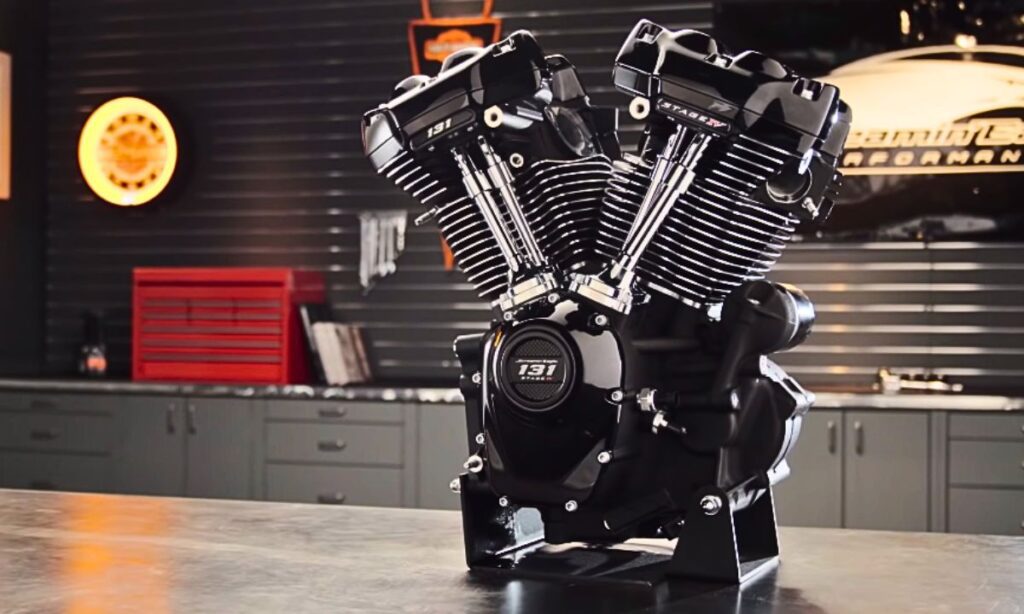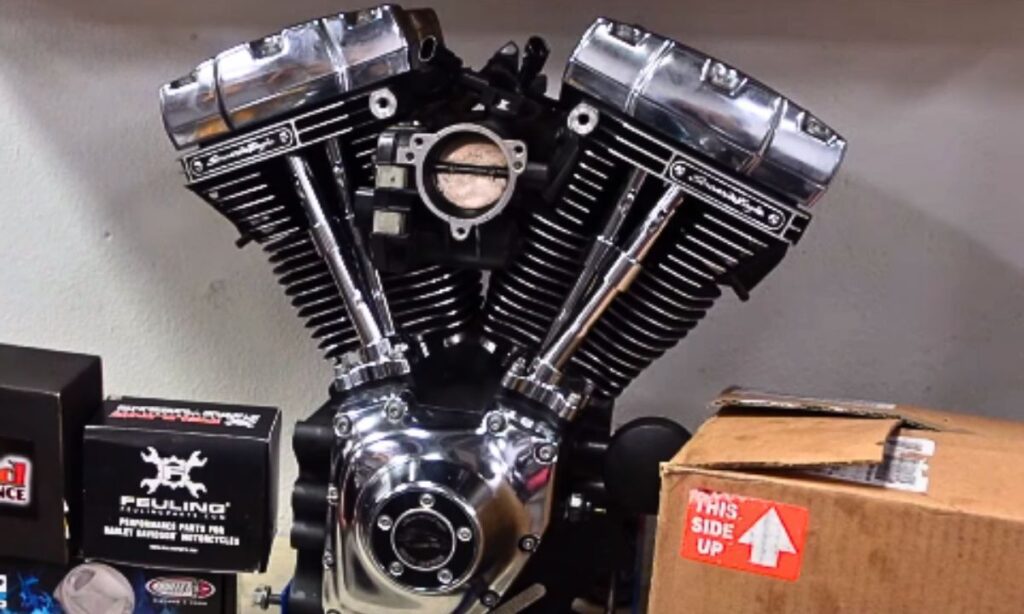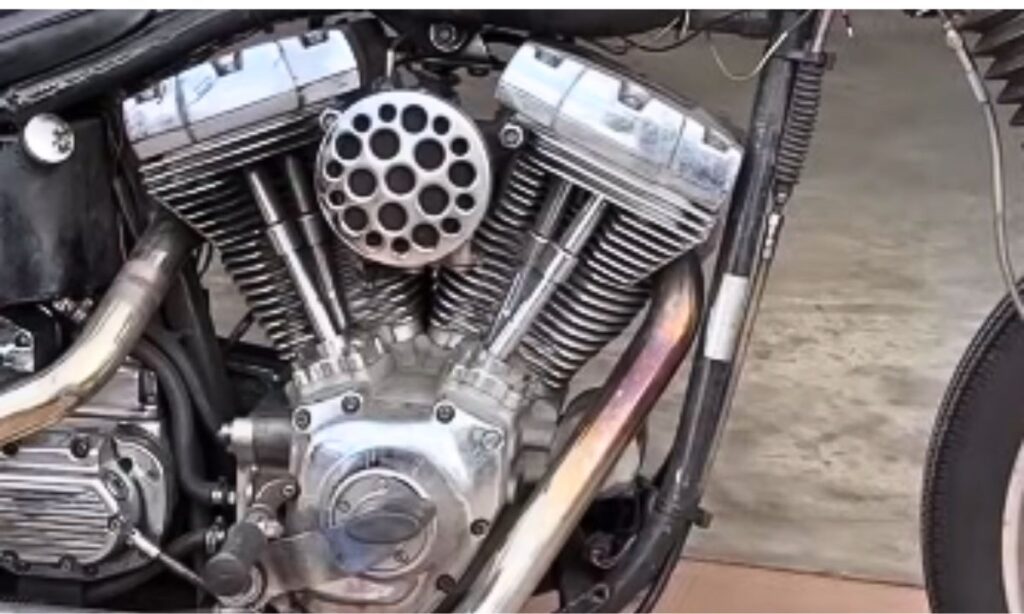The moment I roared to lift my Harley with the 131 engine, it was love at first rev the power, the sound, the sheer presence of it.
Oh man, it was a dream on wheels. But, as with any great love story, it wasn’t all smooth riding.
I started facing some troubles that had me scratching my head. From finicky starts on cold mornings to that odd sputter at high speeds, I knew this beast had some quirks I needed to figure out.
It’s been quite the journey with my Harley 131, and let me tell you, it’s a story worth sharing.
Harley 131 Problems
The common problems with the Harley 131 are Cold Starting, Limp Mode Issues, Stuttering on Acceleration, Heat Problems, Oil Cooler Issues, Issues at Low Fuel Levels, Oil Leakages, Clutch Slipping, Electrical Problems and Suspension and Brake Issues.

1. Cold Starting
While the engine known for its impressive power and torque, has also been associated with cold start issues.
Riders have reported difficulties in getting their engines running smoothly from a cold state, a problem that can be attributed to various factors such as fuel injection system hiccups, spark plug inefficiency, or battery performance issues.
In order to solve the issue, ensure that the battery is fully charged and in good health, use high-quality engine oil that performs well in low temperatures, and consider the installation of a more robust ignition system.
However, regular maintenance checks, especially before the onset of colder seasons, can preempt some of these starting problems.
On the other hand, worn spark plugs might struggle in cold conditions. Inspect and replace them as needed for better ignition.
You should also review the oil and make sure the fuel is fresh. Consider adding fuel stabilizers if the bike is not used regularly.
Sometimes, adjusting the air-fuel mixture and EFI (Electronic Fuel Injection) settings can resolve starting trouble.
2. Limp Mode Issues
One of the prevalent issues faced by many owners is the notorious ‘Limp Mode issues’.
This mode is a safety feature designed to protect the engine from potential damage when it detects a significant operational fault.
When triggered, the bike’s performance is severely restricted, allowing you just enough power to ‘limp’ to a safe location or a service centre.
Owners have reported that this mode engages unexpectedly, even during rides where there are no overt signs of engine distress.
To address this issue, it is essential to identify any error codes that the motorcycle’s diagnostic system may have logged.
These codes can point to the underlying problem, whether it is related to the throttle position sensor, fuel injection system, or any number of engine components.
The resolution often involves a series of steps: checking the engine and transmission oil levels, ensuring the air filter is clean and unobstructed, examining the battery and its connections, and scanning the bike using a diagnostic tool.
If these checks don’t resolve the problem, professional servicing is recommended.
In some cases, a software update or hardware replacement may be required to fix the issue permanently.
3. Stuttering on Acceleration
Stuttering on acceleration is a known issue that has troubled some owners of motorcycles equipped with the Harley 131 engine.
This hiccup, usually felt when the rider twists the throttle to pick up speed, can be both disconcerting and potentially dangerous.
The problem often stems from a series of causes, including fuel system restrictions, spark plug degradation, or improper ignition timing.
Riders have reported this frustrating issue across various forums, indicating that it’s not just an isolated occurrence but rather a more widespread concern.
To address this, checking and replacing the spark plugs can be beneficial, as can ensuring the integrity of the fuel lines and filters.
It’s also advisable to have the engine’s fuel-air mixture and ignition timing checked and adjusted by a professional.
If you are technically inclined, performing a firmware update on the motorcycle’s ECU, if available, can also resolve issues related to engine performance.
4. Overheating
This issue often manifests itself during long rides or in high-temperature climates, where the engine runs hotter than usual.
Overheating can lead to performance degradation, increased engine wear, and, if not addressed, potentially costly repairs.
Owners have reported signs of overheating, which include the engine feeling unusually hot to the touch, a decrease in power, pinging sounds under load, and sometimes even the smell of burning oil.
The 131 engine, with its large displacement and performance-focused design, is particularly susceptible to this when idling for prolonged periods or when operated in stop-and-go traffic where airflow is minimal.
To mitigate overheating issues, you can take several measures:
Ensure the engine oil is of high quality and replaced at regular intervals. Oil plays a critical role in cooling and lubricating.
You should also consider using a premium synthetic oil, which is more effective in extreme temperatures.
Employ a professional to optimize your bike’s fuel maps for better heat management.
Upgrade to parts that improve cooling, such as a high-flow oil pump or a more efficient cooling system.
Reduce the likelihood of overheating by avoiding riding in a manner that places excessive stress on the engine, such as aggressive acceleration.
Try to minimize idle time, especially in warm weather, to keep air moving over the engine.
If you’re less mechanically inclined or facing persistent overheating issues, it is always advisable to consult a certified Harley-Davidson mechanic.
5. Oil Cooler Issue
Harley 131, while known for its impressive power and performance, has not been without its issues, one of which includes the oil cooler problems.
A number of owners have reported that the oil cooler tends to malfunction, leading to higher engine temperatures and, consequently, a reduction in performance.
This heat management problem often manifests itself through the telltale signs of oil leaks or unusually high oil temperature readings.
There are several steps you can take to address the issue; regular maintenance checks can prevent the problem from escalating.
You should look for any signs of oil leakage and monitor the oil temperature gauge closely, especially during long rides or in hot weather.
In some cases, merely cleaning the external fins of the cooler and ensuring proper airflow can resolve the issue.
However, if the problem persists, the oil cooler may need to be replaced.
You can consider aftermarket upgrades that offer enhanced cooling performance over the stock part.
6. Issues at Low Fuel Levels
Riding on low fuel can cause the fuel pump to overwork, as it has to draw fuel from the bottom of the tank, where debris can accumulate.
This can lead to clogging and potential damage to the fuel system.
However, consistently running on a nearly empty tank may cause the engine to run lean, potentially leading to overheating and increased wear.
Owners have reported symptoms such as engine sputtering, loss of power, and, in some instances, the engine failing to start.
These problems can be accentuated during long rides or when access to fuel stations is limited, causing not only inconvenience but also safety concerns.
To fix these issues, it’s crucial to avoid letting the fuel level drop too low.
Regular maintenance, cleaning, replacing the fuel filter and ensuring the fuel pump is in good working condition can help prevent problems.
However, using a fuel system cleaner can assist in removing any build-up within the system.
You should consider keeping your tanks at least a quarter full to minimize risks and maintain the overall health of the engine.
7. Oil Leakages
Owners have reported instances of oil seepage, which can lead to not just a mess but potentially hazardous riding conditions and engine damage if not addressed promptly.
The cause of these leakages often lies in defective seals or gaskets, housing cracks, or improper installation of engine components.
To address this issue, you are advised to first identify the source of the leak.
This can involve a detailed inspection of the engine, particularly around gaskets, the oil pan, and other areas prone to leaks.
Once pinpointed, the fix may range from simply tightening bolts to replacing faulty seals or gaskets.
In cases of cracks or serious wear, professional assessment and repair are recommended.
You should regularly perform checks, especially after long rides or extended periods of use, to catch any early signs of leaking oil, thereby preventing further complications.
8. Clutch Slipping
Clutch slipping is a common issue that plagues many motorcycle engines, including the robust Harley 131.
This problem occurs when the clutch fails to properly engage, leading to a loss of power transfer from the engine to the rear wheel.
The symptom is most noticeable when attempting to accelerate or under heavy loads, as the engine revs increase without a corresponding increase in speed.
Owners have reported this issue across various forums and communities, expressing a mix of frustration.
The root cause often lies within the clutch components, such as worn friction plates, weak springs, or an improperly adjusted clutch cable.
To fix the situation, you should inspect the clutch for wear and replace any components that are not functioning correctly.
For the Harley 131, this might mean upgrading to a high-performance clutch kit that can handle the engine’s power.
However, ensuring that the clutch cable is correctly adjusted for the proper amount of free play is crucial since too much slack can lead to slipping, while too little can cause the clutch to not fully disengage.
9. Electrical Problems
Electrical issues can result in intermittent power loss, difficulty in starting the bike, or complete system failures.
Owners have reported instances where the engine stutters or hesitates, especially under heavy load or acceleration.
These problems are often attributable to faulty ignition components, wiring harness issues, or problems with the engine control unit (ECU).
Others have encountered failed sensors, which lead to poor engine performance or triggering of the check engine light.
To fix the issue, check the battery health and connections, ensuring they are clean, secure, and fully charged.
Following this, inspecting the wiring for any signs of wear, corrosion, or damage is crucial, particularly for bikes that have seen extensive use.
If the issue persists, diagnostic tools can be utilized to read any error codes from the ECU, offering insight into specific malfunctioning components.
In terms of fixes, if a sensor failure is detected, replacing it is often a straightforward solution.
For wiring issues, repairs or complete replacements might be necessary. In cases where the ECU is at fault, reprogramming or replacing the unit will be required.
10. Suspension and Brake Issues
Owners have experienced instances where the suspension does not adequately absorb road irregularities, leading to a less comfortable ride and handling difficulties, particularly at high speeds or during long-distance travel.
The braking system has also been a point of contention, with some riders citing slower response times and a need for increased effort when applying brakes.
Addressing these issues involves preventative measures and corrective actions:
Suspension
Regular maintenance checks should include an inspection of the suspension components for signs of wear and tear.
Upgrading to higher-quality shock absorbers can dramatically improve ride comfort and bike handling, tailored to the weight and riding style of the owner.
Brakes
Replacing the stock brake pads with higher-performance options can offer enhanced stopping power and a better overall response.
However, ensuring that the brake fluid is replaced at manufacturer-recommended intervals and examining the brake lines for any potential damage are essential steps.

Tonmoy, the brains behind the influential motorcycle-focused website, TwoWheller.com, is a dedicated and passionate advocate for biking culture. Born and raised in a family of motorcycle enthusiasts, his love for two-wheeled transportation was ignited at an early age. His commitment to providing in-depth reviews and helpful tips for riders has established him as a respected figure in the motorcycle community.

